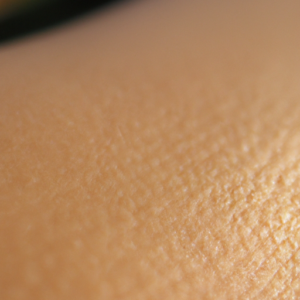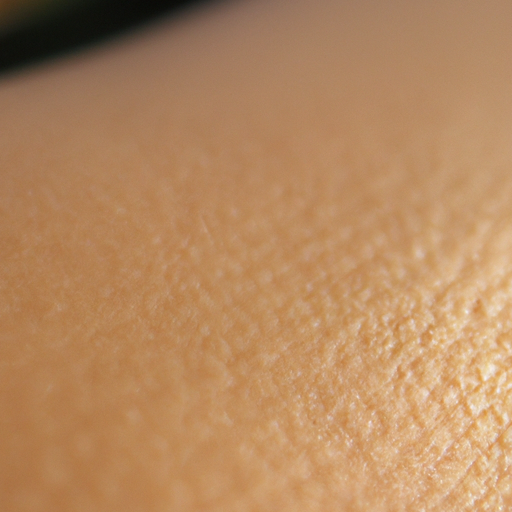Well, well, well! Lentigo is not just a spot!
Are you familiar with Lentigo? It’s more than just a spot on your skin! Lentigo is a skin condition that presents itself as a spot or a patch. It is usually flat, dark, and irregularly shaped. Lentigo can range from a few millimeters to several centimeters in size. The condition is common for middle-aged individuals who have experienced prolonged exposure to the sun.
Lentigo can occur in various forms, and each type has specific symptoms. The two most common types of Lentigo are: Flat Lentigines and Solar Lentigines. Flat Lentigines have a different set of symptoms compared to Solar Lentigines.
Flat Lentigines are dark brown and usually appear on a person’s face, chest, or arms. These spots are flat and do not protrude from the skin. They can range in size from one to several millimeters. In contrast, Solar Lentigines are from the body’s response to prolonged exposure to the sun. These brown spots are more prominent in areas that have had the most sunlight exposure, such as the back of the hands, face, and nose.
The symptoms of both Flat Lentigines and Solar Lentigines include color, size, and surface of the affected area. Flat Lentigines can appear anywhere on the body, while Solar Lentigines are more prominent in areas that have had the most sunlight exposure.

Treatment for Lentigo includes sunscreen, laser therapy, and retinoid creams. Using sunscreen is the first and most crucial step in preventing the condition from worsening. Laser therapy can reduce the appearance of brown spots on the skin. Retinoid creams can improve the condition’s appearance and reduce the appearance of dark, flat lesions.
In conclusion, while Lentigo can present itself as a harmless spot on the skin, it is essential to seek medical attention to ensure that it is indeed Lentigo. Seeking medical attention will lead to an accurate diagnosis and the best treatment options for your skin.
Types of Lentigo: Flats and Solars
So, let’s talk types of lentigo–the flat and the solar. Flat lentigines are commonly referred to as “age spots,” while solar lentigines are known as “sunspots.” Flat lentigines are mostly found on the face, hands and neck, and they appear lighter in color than solar lentigines. Solar lentigines are the result of sun damage and are typically found on sun-exposed skin, such as the face, arms and chest. They tend to be darker in color than flat lentigines.
What are the Symptoms of Flat Lentigines?
As someone who has experienced flat lentigines, I know how frustrating it can be to deal with them. These small, pigmented spots on the skin are usually harmless but can be unsightly and make you feel self-conscious. Here’s what you need to know about the symptoms of flat lentigines:
Color
The color of flat lentigines can range from light brown to dark brown or black. Sometimes they can have a slightly reddish or yellowish tinge to them. It’s important to note that they are usually darker than the surrounding skin and can be mistaken for a mole.
Size
Flat lentigines are usually small, with a diameter of less than 5 millimeters. However, they can grow larger over time. If you notice any changes in size, shape, or color of a flat lentigo, you should seek medical attention immediately.
Surface
Flat lentigines have a smooth surface and are not raised or bumpy like other types of skin growths. They are flat and flush with the surrounding skin.
If you notice any of these symptoms, it’s important to visit your dermatologist for a proper diagnosis. While flat lentigines are usually harmless, they can be a sign of a more serious condition such as skin cancer.
Symptoms of Solar Lentigines
Alrighty, here we go! If you’re like me and get discoloration from sun exposure, then you might be dealing with solar lentigines. These dark brown, tan, or black spots on the skin can be quite annoying, and let’s be real, make us feel a little self-conscious. So, what are the symptoms to look out for?
First off, the color. Solar lentigines are usually darker than your natural skin tone. They can range from light brown to almost black. They also tend to be more defined than flat lentigines, which can be more diffused.
The size of these spots can vary greatly, but they tend to be a few millimeters to a centimeter in diameter. They can also appear in clusters, so keep an eye out for that.
When it comes to the surface of solar lentigines, they are raised and more textured than flat lentigines. You might even feel a slight bump or roughness to the spot when you run your finger over it.
So, there you have it. If you have dark spots on your skin that fit this description, you might have solar lentigines. But don’t worry, there are treatment options available. Head over to BrightSideBeauty.com for more information.
5. Time to Fight the Lentigo: Battle Plan and Weaponry
Okay, so you have lentigines, but don’t panic yet since these spots are typically not harmful. Although you may want them to go away from an aesthetic standpoint, you need to know the different ways to treat them. Let me share some of the most effective treatment options for lentigines that have worked for me or my patients.
The first line of defense is always sun protection! Be sure to wear sunscreen with a minimum SPF 30 and try to avoid direct sunlight during peak hours. This simple preventive measure can go a long way in avoiding further damage to your skin and even make your lentigo lighter over time.
If you’re looking for a quick fix, laser therapy could be your best option. This treatment works by using a laser to target the melanocytes that produce the pigment causing the lentigo. You may need a few sessions to achieve the results you desire, but the treatment itself is typically painless and only takes a few minutes.
Retinoid creams are also an option, and they work by stimulating cell turnover and encouraging the skin to produce new cells. This process can help to reduce the appearance of lentigines and even out skin tone over time. You may need a prescription from a dermatologist to get the most effective retinoid cream.
Remember that while these treatments can be effective, they may not be appropriate for everyone. Discuss your options with a board-certified dermatologist to determine which treatment is right for you and your skin type.
So, don’t lose hope, folks – there are treatment options available for lentigines. Take good care of your skin, and soon enough, you’ll be back to feeling and looking like your best self in no time.
Conclusion: Wrapping Up the Lentigo Discussion
Well, that’s a wrap! After going through the various types and symptoms of Lentigo, it is important to remember to take care of our skin. Regular use of sunscreen can protect us from developing these pigmented lesions. And if you do happen to have Lentigo, don’t worry too much, as it is typically a benign condition. However, if you are unhappy with the appearance of your Lentigo, there are various treatment options available. Laser therapy and retinoid creams have shown good results in recent studies. Consult with a dermatologist to find out which treatment option would work best for you. Remember, as with any skin condition, prevention is always the best cure. Protect your skin from sun damage and regularly check your skin for any changes. And if you do see any sudden changes or growths, don’t hesitate to seek medical advice. A word of caution: Just because Lentigo is typically harmless, doesn’t mean all pigmentations are. So, it is always better safe than sorry!
